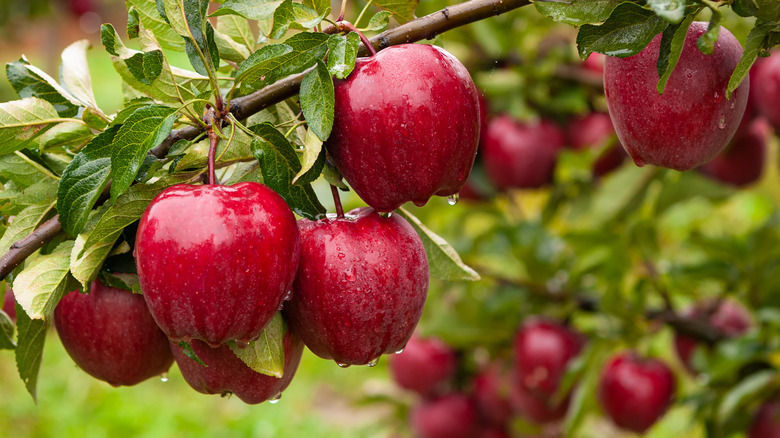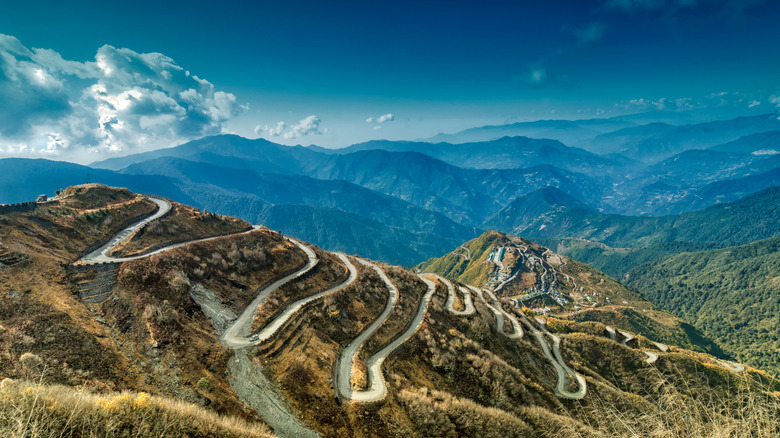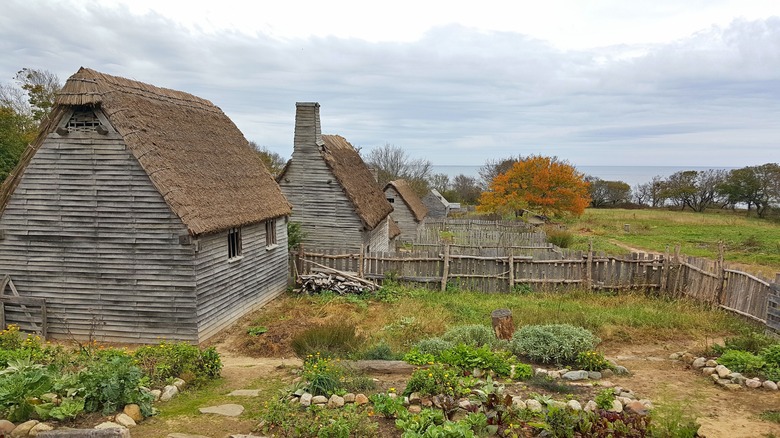Why Pilgrims Are The Reason Apples Are In America
There's something wholly American about an apple. Not only do some varieties share one of the most distinctive national colors, but could you imagine an America without the Big Apple? These juicy fruits appear in art and idioms, on teachers' desks, in children's books, and in movies such as the coming-of-age classic, "American Pie."
But what may be everyone's favorite apple experience is spending an afternoon picking the fruit straight from a branch. Apple picking has become synonymous with Fall festivities, and whether you buy an apple pie from the orchard or use freshly picked Macintoshes to bake your own, there's nothing like that first warm slice.
It turns out that the overlap of the apple and the American identity is not an accident. Though humans have been planting and eating apples for about as long as we have been planting and eating anything, the sweet and satisfying apple didn't make an appearance in North America until the pilgrims themselves showed up and began settling the colonies that would one day become the United States.
The birth of the modern apple
The modern apple first emerged thousands of years ago in the mountains and valleys of Central Asia. Per BBC Travel, the earliest ancestor is a fruit tree native to the Tien Shan mountain range, which is located across modern-day Kyrgyzstan and Kazakhstan. Those fruits were beloved and cherished by the local cultures, and over thousands of years of breeding and cross-breeding with similar fruit — including wild crabapples — the modern apple that we know today was created.
Merchants traveling through Central Asia along the silk road, the infamous trade routes that once connected areas including China, Central Asia, India, and Europe, came across the region's precious local fruit and knew they had a hot commodity on their hands. These traders stocked up on the fruit and even the trees themselves and imported them west into Europe where they became immensely popular due to their sweet, refreshing flavor (via Farmtogether).
While the modern apple's creation has a wide cultural tale, the origin of the apple pie may not be what you think.
Apples Arrive in America
When the pilgrims first settled in the Massachusetts Bay Colony in 1620, they brought with them young apple trees. They planted these trees and watched them flourish right away, and they soon found that they were a versatile fruit that could be used for many things. They were so useful, in fact, that several years later as colonies were cropping up throughout the east coast, the leader of the Maryland colony advised settlers to plant the fruit as a means of sustaining themselves. By 1644, 90% of the farms in Maryland were growing apples (via Historic Sites).
By the early 1800s, Massachusetts native John Chapman, who you might know as Johnny Appleseed, began planting apple trees throughout the colonies as he traveled far and wide on missionary trips. And as settlers spread across the continent of North America, apples went with them too. Today, Readers Digest reports that perhaps thanks to the pilgrims, there are apple orchards in all 50 states, allowing everyone across the U.S. the opportunity to find amazing ways to amazing ways to cook with apples.


